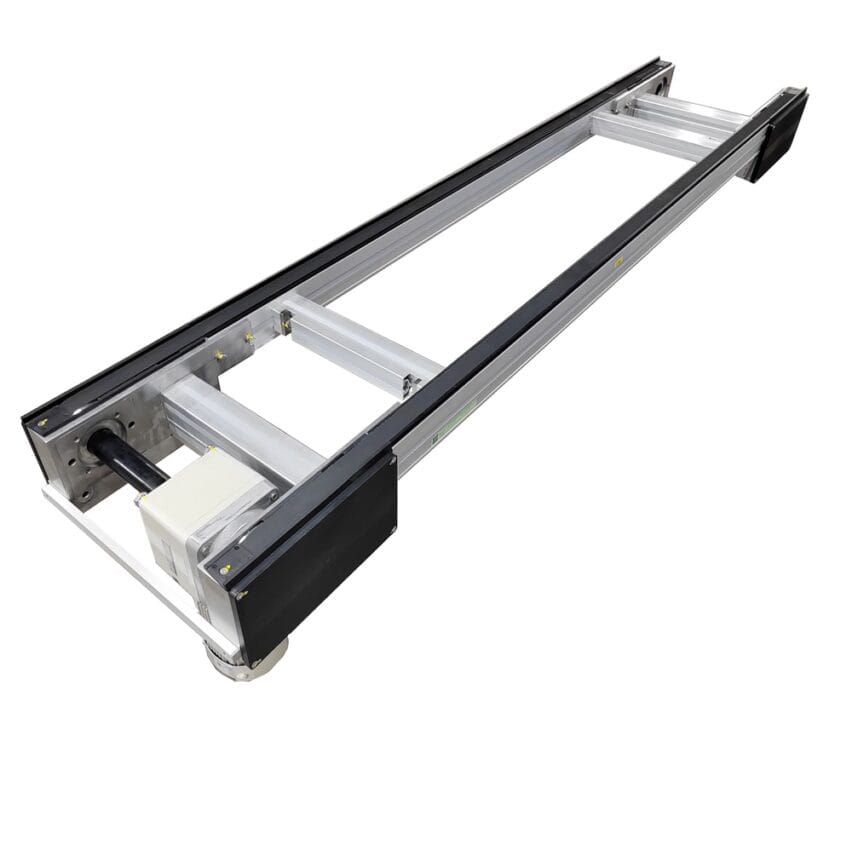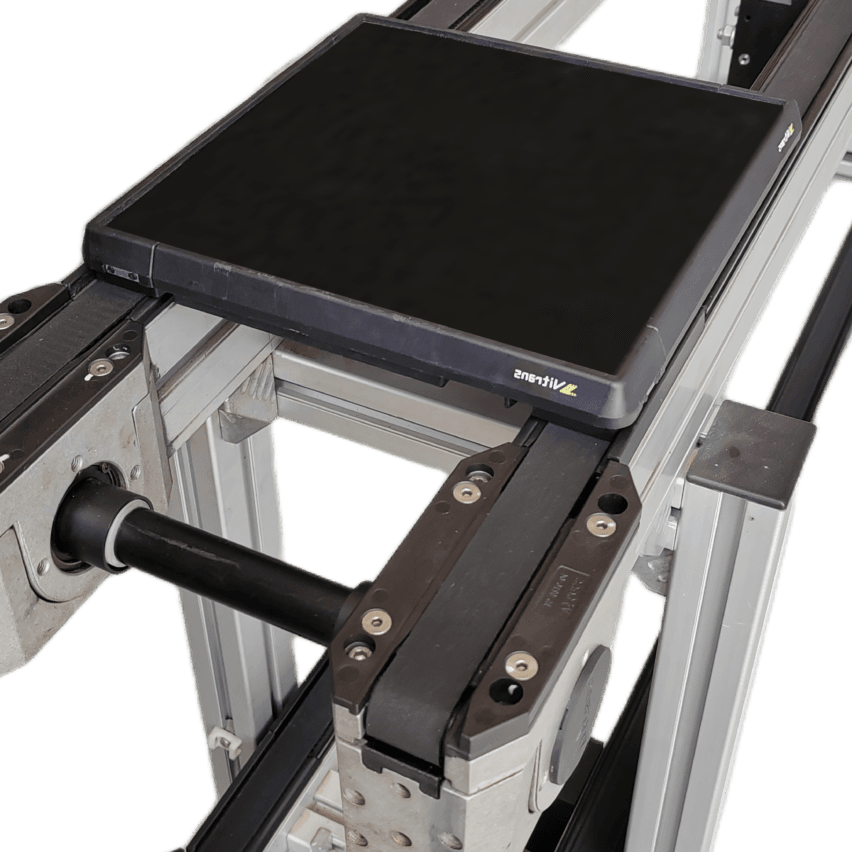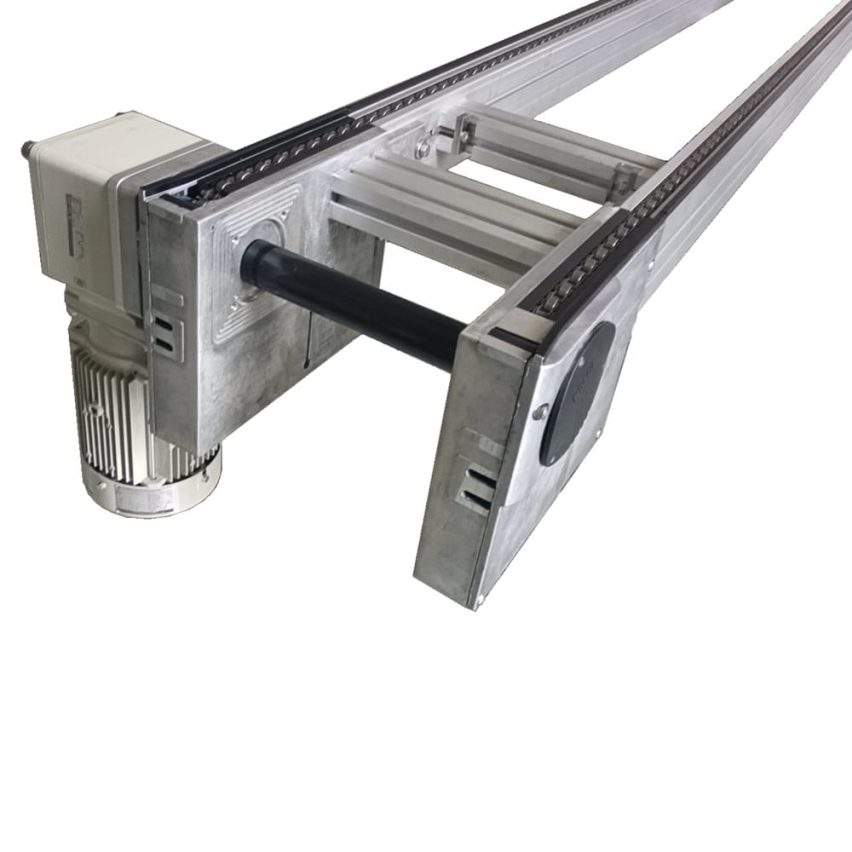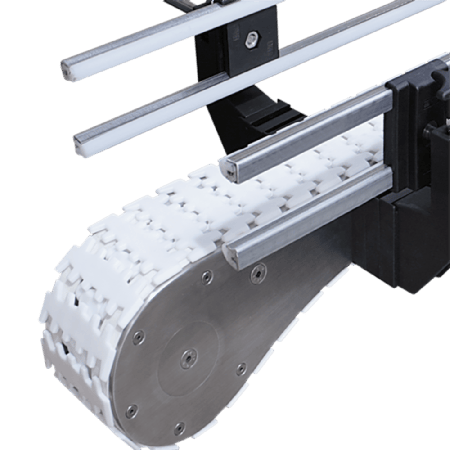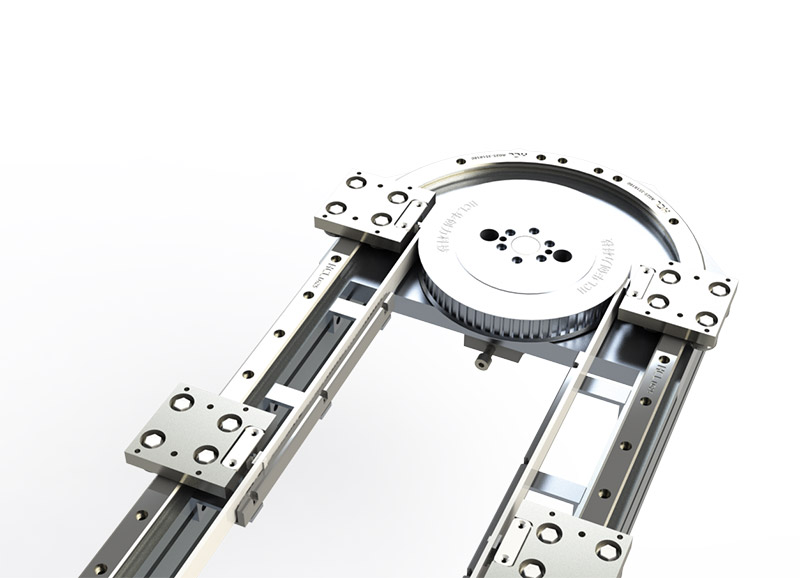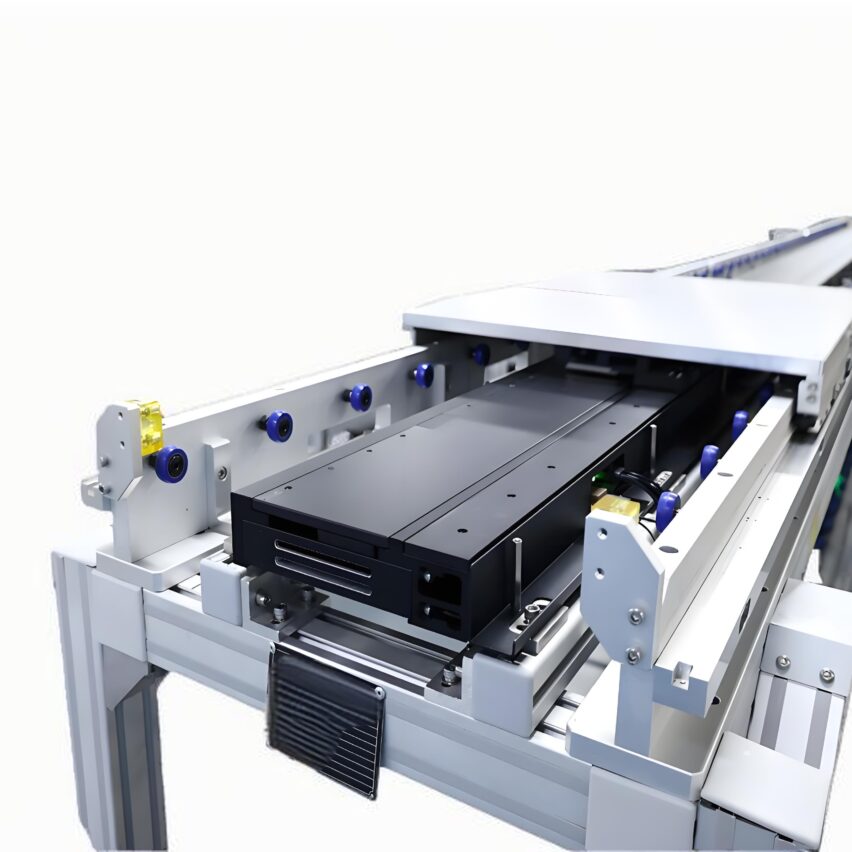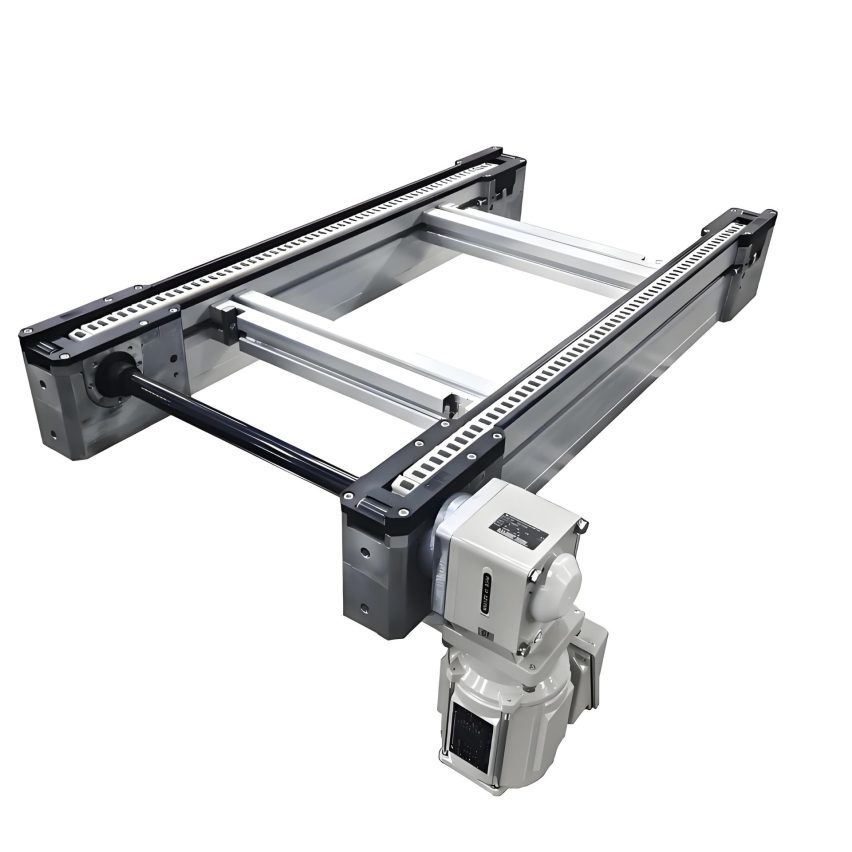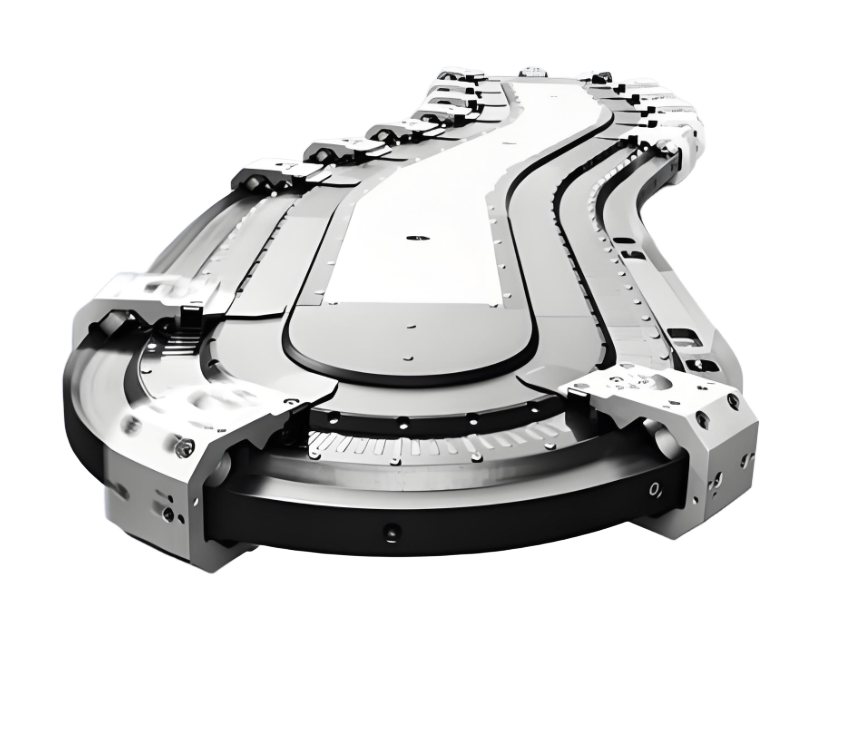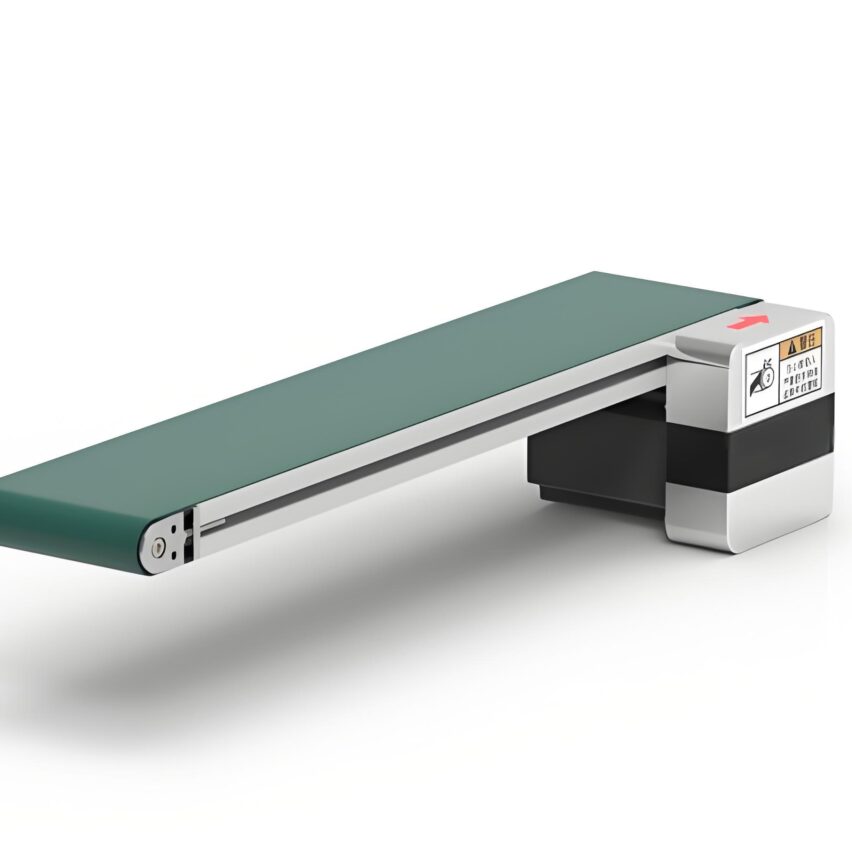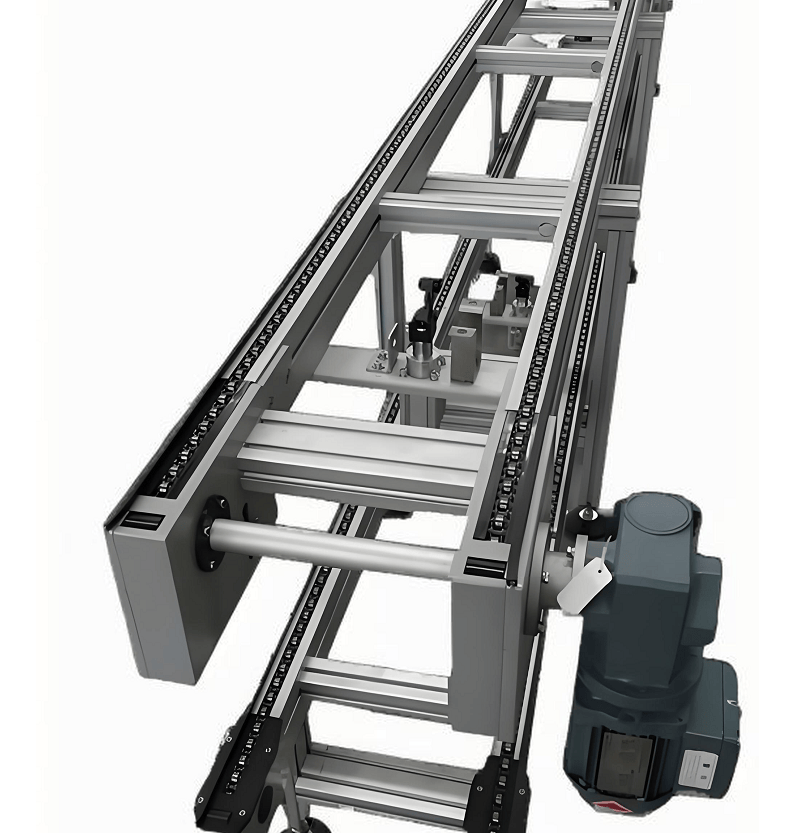I. Core technical principles: synergistic evolution of space and efficiency
The essence of the double jacking multiplier chain is that the"Vertical spatial reuse" and "dynamic triage"The fusion design. Its core operating logic contains three layers of mechanisms:

- differential transmissionThe speed increase is achieved by the ratio of the diameter of the roller at the bottom of the plate (D) to the diameter of the chain roller (d), the actual speed of the plate = chain speed × (1 + D/d), typical applications can be up to 2-3 times the speed increase.
- jacking and translating: The load shifter completes the key manoeuvre at the interface between the upper and lower decks - the hydraulic or pneumatic jacking mechanism lifts the empty pallets off the upper track, and the panning mechanism transfers them laterally to the start of the lower return line.
- Intelligent stop: Each station is equipped with photoelectric sensors and blocking cylinder linkage, response time ≤ 0.5 seconds, to achieve millimetre precision stopping of the workpiece boards.
Ningbo Kai Feng 2024 Patent Revealed byCushion stopper designSolved the industry pain point: When the empty load plate falls, the polyurethane buffer module absorbs 60% impact energy, and with the slider-slide guiding system, it reduces the equipment failure rate by 37%.
Second, industry application scenarios: from automotive manufacturing to medical purification
The technology demonstrates disruptive value in three major areas:
1. Automotive parts assembly lines
A new energy vehicle company's battery pack production line after adopting a double-layer jacking structure:
- The upper layer is loaded with 500kg modules to complete the injection curing, and the lower layer is synchronously returned to the empty plate.
- Jacking and panning machines work in tandem with AGVs to achieveCross-floor material transfer
- Factory space utilisation rate increased by 55%, output per unit area increased by 2.1 times
2. Flexible production of electronics
Practical verification of mobile phone motherboard assembly line:
- Static protection type tooling board (surface resistance 10⁸Ω) to ensure chip safety
- Quickly switch between SMT placement and functional test stations by means of a jacking mechanism.
- Product changeover completed in 2 hoursNissan supports 12 models.
3. Medical aseptic workshops
Innovative applications for filling lines in pharmaceutical companies:
- 316L stainless steel chain with laminar flow hood to meet GMP Class A cleanliness.
- Design realisation of the jacking transition compartmentairtight isolationAvoid cross contamination
- Filling accuracy error ≤ ± 0.1ml, scrap rate down to 0.02%
III. Structural innovation: breakthroughs in modularity and safety
The Industry Frontiers 2025 programme shows two major changes:
- Modular Architecture
- Pre-set 300/600/900mm standard sections, splicing error <0.1mm/m
- Drive motor interface compatible with Siemens, Mitsubishi and other mainstream brands
- Control box with integrated Profinet/EtherCAT protocol, plug and play
- Intrinsically safe design
- Recessed rail protection: Aluminium profiles cover the chain with only 2mm of roller rim exposed.
- Dual channel interlock: Automatic power failure and mechanical locking of the lower level when the jacking action is triggered
- Emergency stop response <70ms, far exceeding ISO 13850 standard requirements
IV. Cracking industry pain points: the balancing act of cost and effectiveness
Despite the significant technological advantages, companies still need to deal with two major contradictions when landing on the ground:
Space optimisation vs initial investment
- Double-storey construction saves 40% of floor space, but the cost of steel supports increases by 25%
- economic inflection point formula: Incremental investment can be recovered within 18 months when the plant rent is >800 RMB/m2/year
Flexible Production vs Maintenance Complexity
- Modular panels support quick changeover, but the hydraulic system of the jacking mechanism requires weekly maintenance.
- Innovative oil circuit solutions: the use ofSelf-sealing quick-change couplingsMaintenance time compressed from 90 minutes to 15 minutes
V. Future Evolution: Three Major Directions for Intelligent Integration
I think the next generation of technology will focus on smart sensing and green operation:
1. Adaptive speed control systems
Real-time monitoring of chain tension through strain gauges, AI dynamically adjusts motor torque. Data from a laboratory shows that this method can reduce energy consumption by 17% and extend chain life by 3.2 times
2. Predictive maintenance network
Rollers have built-in vibration sensors, combined with edge computing to predict failures. Actual cases show that the accuracy of bearing replacement cycle prediction reaches 92% and unplanned downtime is reduced by 80%
3. Carbon fibre composite applications
Experimental proof: carbon fibre rollers than alloy steel weight loss of 68%, growth rate than breakthrough 4.2 times the limit. However, the current cost is 7 times of the steel parts, mass production still need process breakthroughs.
Self-questioning: cracking the landing problem
Q1: Why do car manufacturers prefer double-layer to ring doubler chains?
A: The key is in theHeavy load compatibility and space efficiency. The ring structure is simple to maintain, though:
- Single layer load limit is only 300kg, which is not enough for heavy parts such as engines.
- Equivalent capacity requires an additional 35% site, automotive plant land cost sensitive
Q2: How can the jacking mechanism avoid becoming a system bottleneck?
A: Innovative design to solve traditional shortcomings:
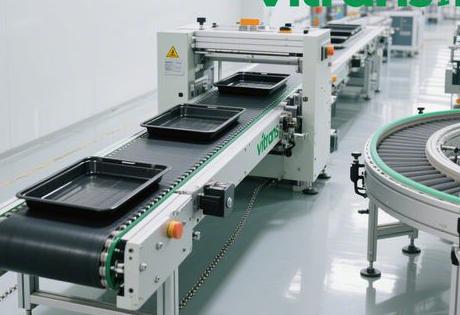
- Redundant drive with two cylinders: Maintains 75% operating speed in case of single cylinder failure
- Slide preloading technology: Elimination of clearance vibration, positioning accuracy of ±0.1mm
- Reversal time <3 seconds to meet 60JPH (parts per hour) beat requirement.
Q3: Which scenarios should I hold off on introducing this technology?
A: Three types of situations need to be assessed with caution:
- Ultra low speed production line(Beat > 5 minutes): equipment utilisation < 40%, low return on investment
- Strongly acidic and alkaline environmentsEven for 316L stainless steel, the corrosion rate doubles at pH < 2.5.
- Miniature component assembly: Vibration amplitude of ±0.3mm on tooling boards may affect precision work.

